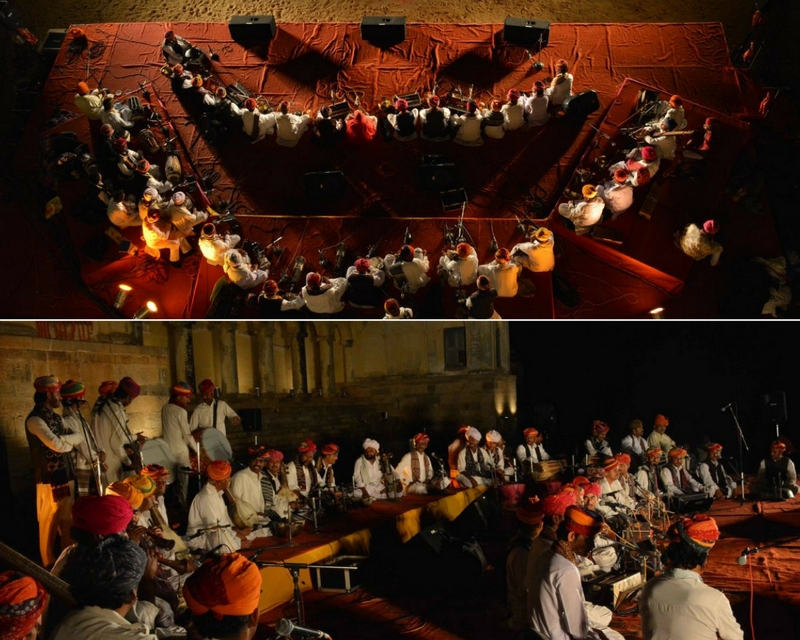From obscure villages around Jaisalmer, Jodhpur and Barmer in western Rajasthan, comes a musical tradition that has digested and belted out melodies from everywhere between Persia and the Punjab for several centuries. This is the music of The Manganiyars: a community of Muslim court musicians whose royal patrons may have disappeared because of circumstances of history, but whose music lives because its practitioners cannot live without it. These splendid virtuoso musicians combine the popular mystical and secular traditions of the desert, with those of the courts of the maharajas. They perpetuate a religious and chivalrous art dating from the Middle Ages.
The Manganiyars, as the roots of the name suggests, asked for alms in lieu of entertainment, performing at marriages, deaths and births – something they continue doing today. They converted to Islam some 400 years ago, an event that only enriched the already entrenched folk tradition of Rajasthan and Sindh with the import of words and tunes and instruments (like the Kamancha, a three-stringed ancestor of the violin, which has a bowl-shaped resonating chamber covered by goat skin) from as far away as Azerbaijan. Other commonly used instruments include Khartaal, a kind of castanet made of teak and Dholak, a hand drum with a simple membrane and handle.
Their music is complex and secular, its roots spread wide, though chiefly in Hindustani classical music. But its delivery isn’t bound by the set rules of this tradition. The Manganiyar splits notes into improbable fractions, keeps beat with his eyes, shifts tempo as suddenly and effortlessly as a gust of desert wind moves a dune. The musical performances of the Manganiyars, ranging from traditional village settings to the biggest stages of the world, are in high demand not only because of their unique voices and instruments but also because they move the audiences, invoking the greatest, deepest joy to tears of happiness.
Comments are closed.



